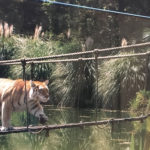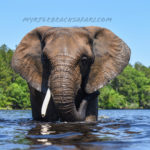The Preserve
Frequently Asked Questions
Share this page
"There is a noble but ill-informed idea that big cats and other endangered species should not be kept in captivity at all but should be allowed to live in the wild. Where is the wild? It’s gone.”
Why keep animals in captivity? Shouldn’t they roam free?
Who regulates the Myrtle Beach Safari?
WE HAVE BEEN LICENSED SINCE 1982. Myrtle Beach Safari is licensed and inspected by the U.S. Department of Agriculture (ISDA). In order to maintain our federal license, the Safari provides programs of veterinary care and maintains transparent records of the health, safety, and enrichment for all the animals. The Myrtle Beach Safari has regular unannounced USDA inspections throughout the year and is subject to the same federal oversight as all the nation’s zoos. All births, deaths, acquisitions, and disbursals of all wildlife are meticulously recorded by inspectors.
Has the Safari ever been charged with violations?
THE MYRTLE BEACH SAFARI has never been charged with a USDA violation of any kind. This is an often-misunderstood topic. During regular unannounced inspections, USDA inspectors may make recommendations to improve facility and husbandry practices. These are only recommendations which the permit holder may adopt if appropriate and can be disputed if inappropriate. This is part of the cooperation process between the federal government and license holders. It provides a record of topics discussed and recommendations the inspector has made. Detractors, often unfamiliar with USDA process and paperwork, misinterpret “recommendations” by inspectors as “violations”.




